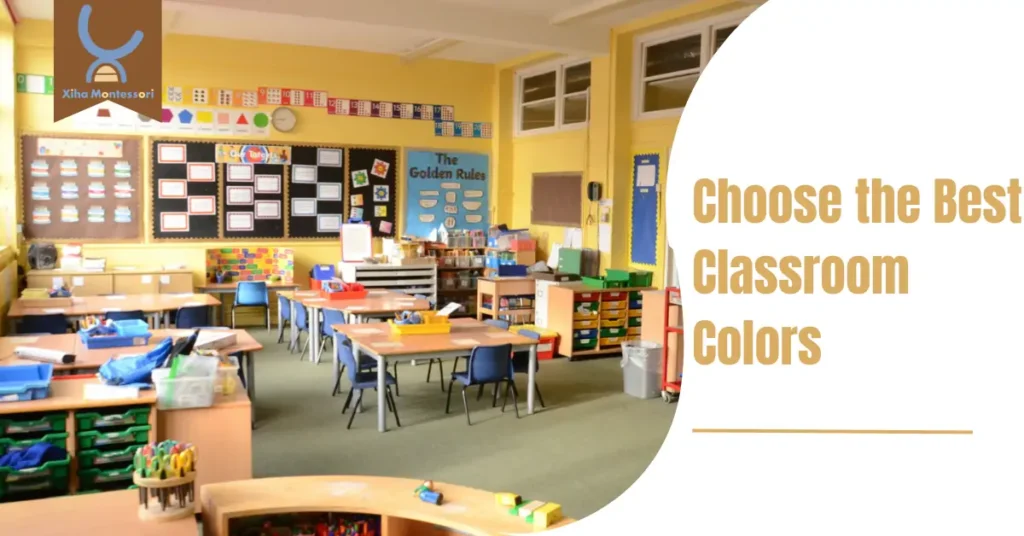Are you looking to create an optimal learning environment for your students? An often overlooked factor that can greatly impact your child’s educational experience, an essential factor to consider is classroom colors. Classroom colors can have a significant impact on learning and classroom management.
Research has shown that certain colors can evoke specific emotions and influence our mood and behavior. A well-chosen color scheme can promote student focus, creativity, and productivity. On the other hand, the wrong colors can lead to distraction, restlessness and shorter attention spans.
It is important to balance stimulation and a calming environment when choosing classroom colors. Different age groups and subjects may have different color preferences, so it’s important to consider the specific needs of your students.
Whether you’re a teacher, parent, or school administrator, understanding the psychology behind different colors can help create an environment that promotes focus, creativity, and positive energy. This article will examine choosing the best classroom colors to improve student engagement and academic performance.
What Impact Do Classroom Colors Have on the Environment?
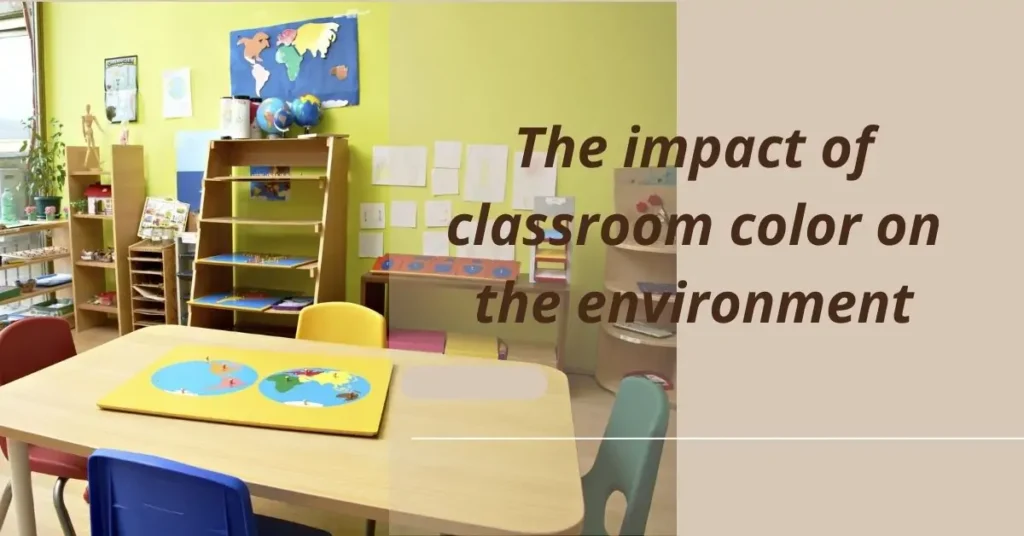
Colors profoundly affect our emotions and behaviors, making their classroom application a powerful tool for influencing student mood and engagement. Warm colors like red and orange can invigorate and stimulate, and they are suitable for physical education spaces or creative areas. In contrast, cool tones such as blue and green promote calmness and focus, which is ideal for traditional classrooms where concentration is key.
The selection of colors can also foster inclusivity. Certain colors can minimize glare and visual strain for students with specific learning and attention difficulties, creating a more accessible classroom environment.
The Best Color to Use in a Classroom Environment
Choosing the right colors for different classroom areas is essential for enhancing students’ learning, creativity, and well-being.
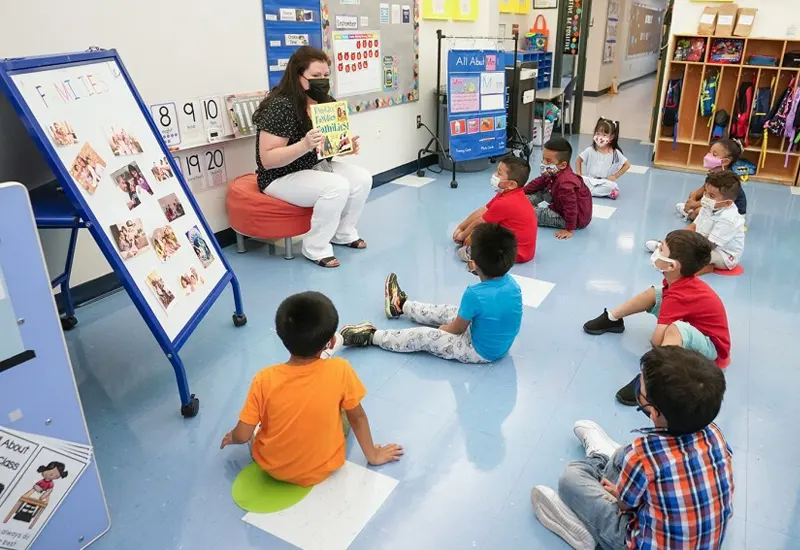
Learning Area
Learning areas require classroom colors that enhance concentration and minimize distractions. Light blue is an excellent choice, promoting calm and focus. Green also reduces eyestrain, making it ideal for extended periods of study.
Activity Area
Activity areas benefit from bright colors that inspire energy and creativity. Bright yellows and oranges can be energizing and inspiring, making them perfect for spaces dedicated to arts, crafts and physical education.
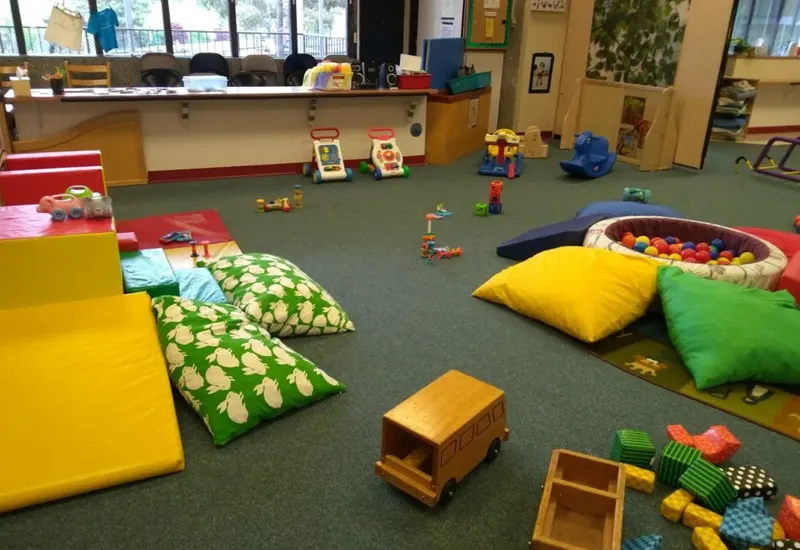

Office
The office area is where administrative tasks occur and requires a balance of calm and energy. The color blue fosters trust and efficiency, while the color green maintains a relaxed atmosphere. These classroom colors can foster positive interactions between staff and students.
Reading Area
A reading area should feel comfortable and inviting, encouraging students to immerse themselves in literature. Warm earth tones, such as beige or soft browns, paired with log-colored bookshelves can create a cozy atmosphere.
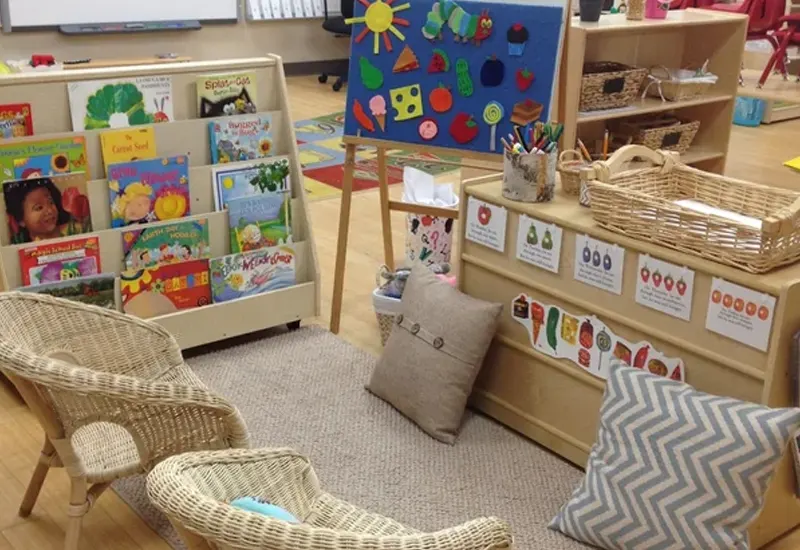
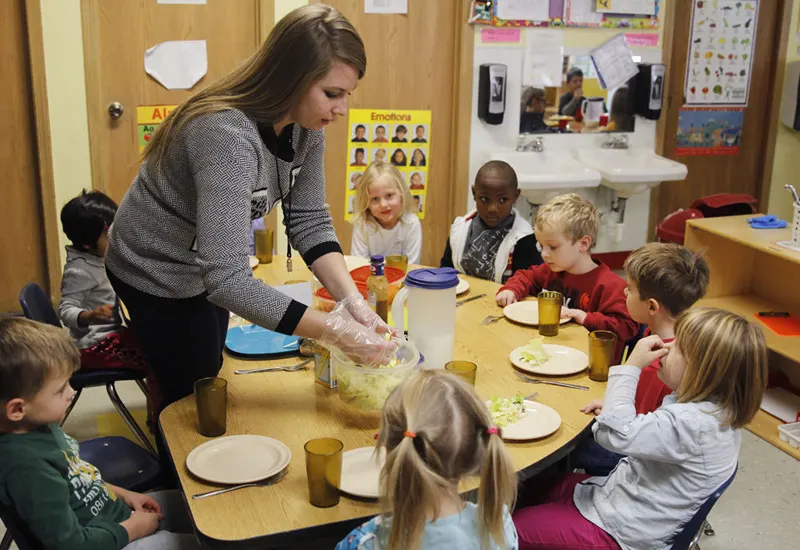
Eating Area
The eating area should be warm and inviting, promoting social interaction and relaxation. Soft yellow stimulates appetite and communication, while red accents create a vibrant dining experience. These colors should be used carefully to avoid creating an overly busy atmosphere where relaxation is the goal.
By considering the psychological impact of color, the effective use of color in different classroom areas can significantly improve the learning environment and make it more responsive to student needs and activities.
The Impact of Classroom Colors on Learning
The correlation between color and learning is undeniable. The right classroom colors can improve attention, memory, and student engagement. For example, blue has been linked to improved attention and cognitive performance, making it a top choice for academic environments.
Innovative teaching methods can also be supported through color; vibrant hues can stimulate creativity and encourage dynamic interaction within the classroom. Conversely, overstimulation through excessively bright or clashing colors might distract or unsettle students.
What Colors Helps With Learning?
Everything can be affected by color, and different classroom colors can create different moods, here are some of the ways that color can affect moods and more
1. Orange

With its warm and vibrant tone, Orange encourages social interaction, making it an excellent choice for group activity areas. It stimulates creativity and enthusiasm, helping students feel more engaged and open to communication.
2. Red

Red is the color of stimulation, capable of raising energy levels and attention. It’s best used in areas where physical activity or alertness is required. However, its intensity means it should be used sparingly to avoid causing feelings of anxiety or agitation.
3. Green

Green is known for its calming effects, reducing stress and helping students focus. It’s an ideal color for core learning areas, providing a restful and soothing backdrop that can enhance concentration and efficiency in learning.
4. Yellow

Yellow, the color of optimism, stimulates mental activity and generates a positive learning atmosphere. It encourages creativity and makes students feel energized and happy. Yellow is best used in creative spaces or to highlight key learning materials.
5. White

White creates a sense of space and clarity, offering a clean background that enhances other colors. It promotes an organized environment but should be balanced with other colors to avoid feeling too sterile or bland.
The Impact of Classroom Colors on Mood and Behavior
Warm Colors
Warm colors like red, yellow, and orange can energize students. Red increases alertness and stimulates creativity. Yellow enhances creativity and grabs attention. Orange lifts mood and promotes enthusiasm. These colors can invigorate a classroom, making it suitable for creative subjects and activities.
Cool Colors
Cool colors such as blue and green create a calming effect. Blue promotes memory retention and enhances creativity. Green brings balance and harmony, symbolizing relaxation and stability. These colors are ideal for subjects that require focus and concentration, like math and science.
Neutral Colors
Neutral colors like beige, gray, and white provide a balanced backdrop. These colors do not distract students and allow other colors to stand out. Neutral tones can help create a versatile learning environment. They work well in classrooms where various activities take place.
Practical Tips for Choosing Classroom Colors
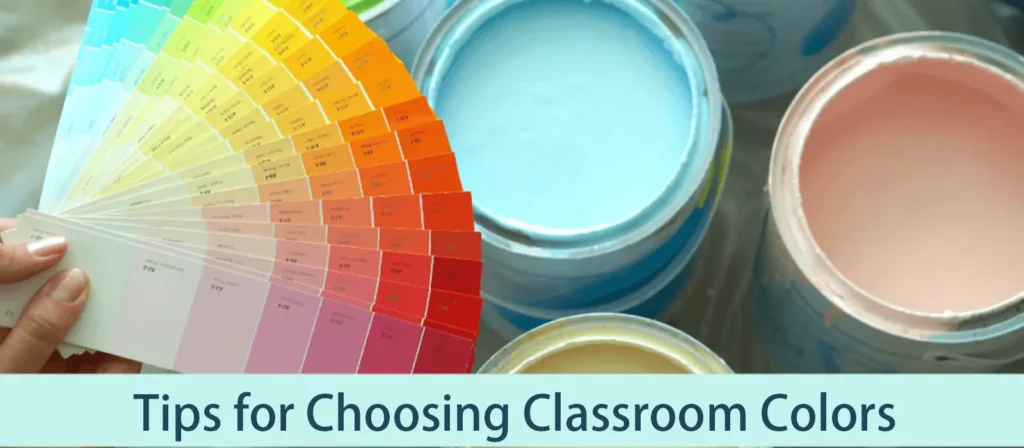
1. Consider the Purpose of the Room
Learning Areas
Classroom colors should align with the purpose of the learning area. Yellow can improve concentration and enhance memory. This color works well in areas dedicated to subjects like history and languages. Red can boost creativity and alertness, making it suitable for art and creative writing spaces. Green promotes relaxation and stability, which helps students focus on tasks requiring deep concentration, such as reading and science.
Play Areas
Play areas benefit from vibrant and energetic colors. Orange boosts mood and inspires engagement. This color keeps students alert and fosters self-confidence. Yellow can also stimulate creativity and create a lively atmosphere. Bright greens and blues add a playful yet calming touch, ensuring a balanced environment where children feel energized and relaxed.
Relaxation Areas
Relaxation areas require calming and soothing colors. Soft blues create a sense of calm and well-being. These colors help students unwind and reduce stress. Light greens promote clarity and reduce anxiety, making them ideal for quiet corners or reading nooks. Neutral tones like beige and light gray provide a serene backdrop, allowing students to relax without distractions.
2. Balancing Bright and Subtle Tones
Avoiding Overstimulation
Overstimulation can hinder learning. Classroom colors should strike a balance between bright and subtle tones. Loud colors like red, orange, and yellow can boost performance but should be used sparingly. Too much brightness can overwhelm students. Incorporating neutral tones like white or gray can help balance the vibrancy, creating a harmonious environment.
Creating a Calming Environment
A calming environment enhances focus and reduces stress. Cool colors like blue and green are ideal for this purpose. Blue promotes memory retention and enhances creativity. Green brings harmony and balance, making it easier for students to concentrate. Combining these colors with neutral tones can create a soothing atmosphere conducive to learning.
3. What are the Most Calming Classroom Colors?
Symbolizing the sky and the sea, blue exudes tranquility and stability, qualities that can transform a classroom into a peaceful haven conducive to learning. Lighter shades of blue can help regulate heart rate and reduce anxiety, making them ideal for supporting students’ emotional and mental well-being.
Incorporating blue into classroom design not only aids in maintaining a calm atmosphere but also supports sustained attention and focus, which are crucial for effective learning and teaching.

What Are the 3 Best Classroom Colors to Work With?
Choosing classroom colors involves balancing psychological impact with functional design. Three colors that effectively enhance learning environments are:
- Green: Symbolizing nature and growth, green is soothing to the eyes and promotes balance. It is perfect for areas requiring prolonged concentration and can help reduce eye strain and fatigue.
- Yellow: Yellow is associated with sunshine and happiness and can energize and uplift. However, its application should be strategic, using softer shades to brighten spaces without overwhelming, stimulating creativity and positivity.
- Blue: Merging the calmness of blue with the energy of red, purple supports creativity and depth of thought. It’s ideal for spaces dedicated to creative endeavors and reflective learning, encouraging imagination and innovation.
Choose Colors According to Age Group
Children’s responses to color evolve with age. For younger children, bright and vibrant colors can create a stimulating and welcoming environment, encouraging exploration and learning. As children grow, incorporating calming colors like blue and green can help maintain focus, especially for students transitioning to more structured learning activities. Adolescents may appreciate a more sophisticated color scheme that mirrors their maturing tastes, integrating neutral backgrounds with strategic color accents to support concentration and inspire creativity.
Preschool and Kindergarten
Young children respond well to bright, warm colors. Red, yellow, and orange can stimulate their senses and engage them. These colors can make the classroom feel lively and welcoming. Bright greens and blues can also create a playful yet calming atmosphere.
Elementary School
Elementary-aged children prefer tints and pastels. Soft shades of blue and green promote calmness and focus. Light yellows can enhance creativity without causing overstimulation. These colors can help maintain a balanced environment conducive to learning and exploration.
Middle School
Middle school students enjoy a mix of vibrant and subdued colors. Bright colors like red and orange can stimulate energy and creativity. Cool colors like blue and green can provide a calming effect. Combining these colors can cater to the diverse needs of middle school students.
Choose the Right Colors Palette for Your Classroom
Choosing the right color palette requires understanding classroom color meanings and goals. This helps to maintain focus and reduce stress.
Classroom colors and meanings
| Color | Color Meaning |
|---|---|
| Blue | Order, direction, peace, spiritual |
| Green | Balance, harmony, nature |
| Brown | Earthy, structure, support, honesty |
| Yellow | Sunshine, renewal, hope |
| White/Beige | Pure, light, innocence, completion |
Classroom Colors Trends and Popular Choices
Staying abreast of classroom colors trends can provide fresh ideas and inspiration, ensuring that learning environments remain modern and engaging.
Current Trends in Educational Design
Current trends in educational design favor flexibility, sustainability, and inclusivity. A shift toward colors that create a calm, focused atmosphere is recommended. In terms of classroom colors, this translates into natural, soothing palettes that reflect the outside world and adaptable spaces that can be customized with different color palettes to accommodate a variety of learning activities.
Popular Color Choices
Popular color choices in contemporary classrooms include soft blues, yellows, and greens for a calming effect and neutral tones that can serve as a backdrop for more energetic accents. These choices reflect the trend of creating serene, focused environments conducive to learning and personal growth.
Innovations in Classroom Colors Use
Innovations in color use include interactive walls painted with writable, washable paint that allow students to engage directly with their environment. Another trend is using thematic color schemes that support classroom themes, making the classroom a learning tool.
The strategic use of classroom colors is a dynamic and evolving field that reflects the latest educational research and design trends. By carefully considering the psychological impact, age appropriateness, and current trends in the use of color, educators can create spaces that look appealing and actively support student learning and emotional well-being.
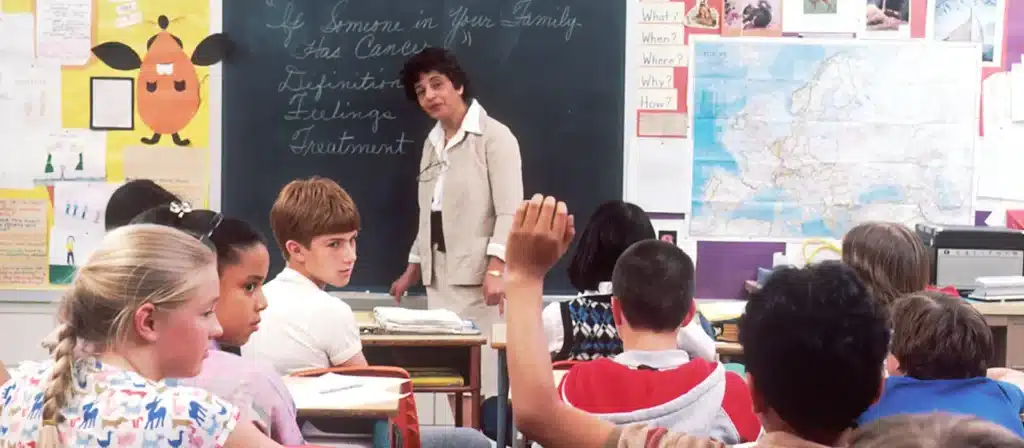
Expert Recommendations
Insights from Educators
Educators emphasize the importance of choosing the right classroom colors to support learning. Teachers at Bright Elementary School observed that yellow enhanced student creativity and engagement. Blue in reading areas helped students concentrate better. Green in science and math areas promoted a sense of calm and stability.
- Yellow: Enhances creativity and engagement.
- Blue: Promotes concentration.
- Green: Creates a calming environment.
Insights from Color Psychologists
Color psychologists highlight the impact of colors on mood and behavior. According to studies, warm colors like red and yellow can energize students and stimulate creativity. Cool colors like blue and green are calming, promoting focus and relaxation. Neutral colors provide a balanced backdrop, allowing other colors to stand out without causing overstimulation.
- Warm Colors: Energize and stimulate creativity.
- Cool Colors: Promote focus and relaxation.
- Neutral Colors: Provide a balanced backdrop.
Conclusion
The right classroom colors can enhance mood, improve concentration, and even promote better communication. Educators should consider each room’s purpose and their students’ age group. By incorporating these principles into classroom design, educators can significantly impact the educational experience of their students, making every lesson a learning opportunity and a sensory experience that supports their overall development.
Educators should observe the effects of the chosen colors. Adjustments can be made based on student responses.

